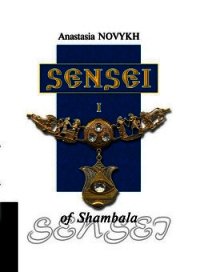The Journeyer - Jennings Gary (книга читать онлайн бесплатно без регистрации .TXT) 📗
“They say the men have caught a badak-gajah—a unicorn—and should shortly be fetching it in.”
Well, that news excited even me. As far away as Venice, unicorns were known by repute, and some people believed in their existence, and others regarded them as mythical creatures, but all thought fondly and admiringly of the idea of unicorns. In Kithai and Manzi, I had known many men—usually those well along in years—to ingest a medicine made of powdered “horn of unicorn,” as an enhancer of virility. The medicine was scarce and only seldom available, and prodigiously costly, so that gave some evidence that unicorns really existed, and were as rare as the legends said they were.
On the other hand, the legends told in Venice and Kithai alike, and the pictures artists drew, depicted the unicorn as a beautiful, graceful, horse- or deerlike animal with a long, sharp, twisted, single golden horn springing from its forehead. Somehow I had doubts that this Ava unicorn could be the same. For one thing, it was hard to conceive of such a dreamlike creature living in these nightmarish jungles, and letting itself be caught by the dullard Mien. For another, that local name, badak-gajah, translated only as “an animal as big as an elephant,” which did not sound right at all.
“Ask them, Yissun, if they take the unicorn by setting out a virgin maiden to entice it to capture.”
He asked, and I could see the blank looks with which that query was received, and several of the women murmured “ame!” so I was not surprised when he reported that no, they had never had opportunity to try that method.
“Ah,” I said. “The unicorns are that scarce, are they?”
“The virgins are that scarce.”
“Well, let us see how they do take the creature. Can someone show us where it is now?”
A little naked boy, running almost energetically ahead of us, led me and Hui-sheng and Yissun there, to a mud flat near the river. Unaccountably, a vast pile of rubbish was burning furiously in the very middle of the mud, and all the village men, exhibiting none of their usual torpor, were actually dancing around the fire. There was no sign of any unicorn, or any other animal, caught or not. Yissun asked about and reported to me:
“The badak-gajah, like the karbau ox and the ghariyal serpent, likes to sleep in the coolness of the mud. These men, early this dawn, found one here asleep, only its horn and nostrils visible above the surface. They took it in their usual manner. Moving quietly, they piled over the spot reeds and cane and dry grass, and set it afire. The beast awoke, of course, but could not wallow loose of the mud before the fire began to crust it, and the smoke quickly rendered the unicorn unconscious.”
I exclaimed, “What a dreadful way to treat an animal of so many pretty legends! So then they made it captive, I suppose. Where is it?”
“Not captive. It is still under there. In the mud under the fire. Baking.”
“What?” I cried. “They are baking the unicorn?”
“These people are Buddhists, and Buddhism forbids their hunting and killing any wild animal. But their religion cannot hold them to account if the animal simply suffocates and then cooks, all by itself. They then can eat it without committing any sacrilege.”
“Eat a unicorn? I cannot conceive of a worse sacrilege!”
However, when the sacrilege was finally concluded, and the middle of the mud flat had baked to pottery hardness, and the Mien chipped it apart and revealed the cooked animal, I saw that it was not a unicorn—anyway, not the unicorn of legend. The only thing it had in common with the stories and the pictures was its single horn. But that grew not from its forehead, it grew out of an ugly long snout. The rest of the animal was just as ugly and, though nowhere near as big as an elephant, at least as big as a karbau. It did not resemble a horse or a deer, or my image of a unicorn, or anything else I had ever seen. It had a leathery skin that was all in plates and folds, rather like cuirbouilli armor. Its feet were vaguely elephantine in shape, but its ears were only little tufts, and the long snout had an overhanging upper lip, but no trunk.
The whole animal had been cooked quite black by the mud baking, so I could not say what its original color was. But the single horn had never been golden. In fact, as I could see when the Mien carefully sawed it off the animal’s casklike head, it was not really made of horn substance at all, nor of ivory, like a tusk. It seemed merely a compaction of long hairs all grown in a hard, heavy clump that rose to a blunt point. But the Mien assured me, with much exuberance at their good fortune, that this really was the source of the “horn of unicorn” virility enhancer, and they would receive much payment for it—by which I daresay they meant an ample exchange in areca nuts.
Their headman took possession of the precious horn, and the others began to skin off the heavy hide and cut up the carcass and bear the steaming portions back to the village. One of the men handed to me and Hui-sheng and Yissun each a piece of the meat—straight from the oven, so to speak—and we all found it tasty, though somewhat stringily fibrous. We looked forward to sharing the Mien’s evening meal, but we returned to the village to find that every last morsel of the unicorn meat had been drenched in the reeking nuoc-mam sauce. So we declined to join in, and instead that night ate some fish our boatmen had caught from the river.
Although the Mien claimed to be Buddhists, the only remotely religious behavior we saw for a long time was their fearful and fretful concern about the surrounding nat demons. The Mien addressed their children, whatever their names, as “Worm” and “Pig,” so the nat would deem them beneath notice. Although there was plenty of oil locally available—oil of fish and sesame and even naft oil seeping from the jungle ground in places—the Mien would never grease their elephants’ harness or their cart and barrow wheels. They said the squeaking kept the nat away. In one village, where I saw that the women had to carry water from a distant spring, I suggested building a conduit of split zhu-gan cane to bring the water right into the village. “Ame!” cried the villagers; that would bring the spring’s resident “water nat” too dangerously close to human habitation. The first time the Mien saw Hui-sheng light her incense burner in our camp at bedtime, they muttered “ame!” and got Yissun to tell us that they never employed incense or perfumes—as if we needed to be told that—for fear sweet smells might attract the nat.
However, as our company got farther down the Irawadi, into more populous country, we began to find in many villages a mud-brick temple. It was called a p’hra, and it was circular, shaped like a large hand bell with its mouth on the ground and its steeple-handle sticking up in the air, and in each p’hra lived a Buddhist lama, here called a pongyi. Each was shaven-headed and yellow-robed, each was disapproving of this world and his fellow Mien and life in general, and was morosely impatient to get out of Ava and on to Nirvana. But I met one who was at least convivial enough to converse with Yissun and me. That pongyi proved to be so educated that he could even write, and he showed me how the Mien writing was done. He could not add anything to the tale I had heard—that the Mien’s earlier history had ended in their bellies—but he did know that writing had been nonexistent in Ava until less than two hundred years ago, when the nation’s then King Kyansitha, all by himself, invented an alphabet.
“The good king was careful,” he said, “not to make any of the letters angular in shape.” He drew them for us with a finger in the dusty yard of his p’hra. “Our people have nothing to write on but leaves, and only sticks to scratch on them with, and angular characters might tear the leaves. So, you see, all the letters are rounded and easy-flowing.”




